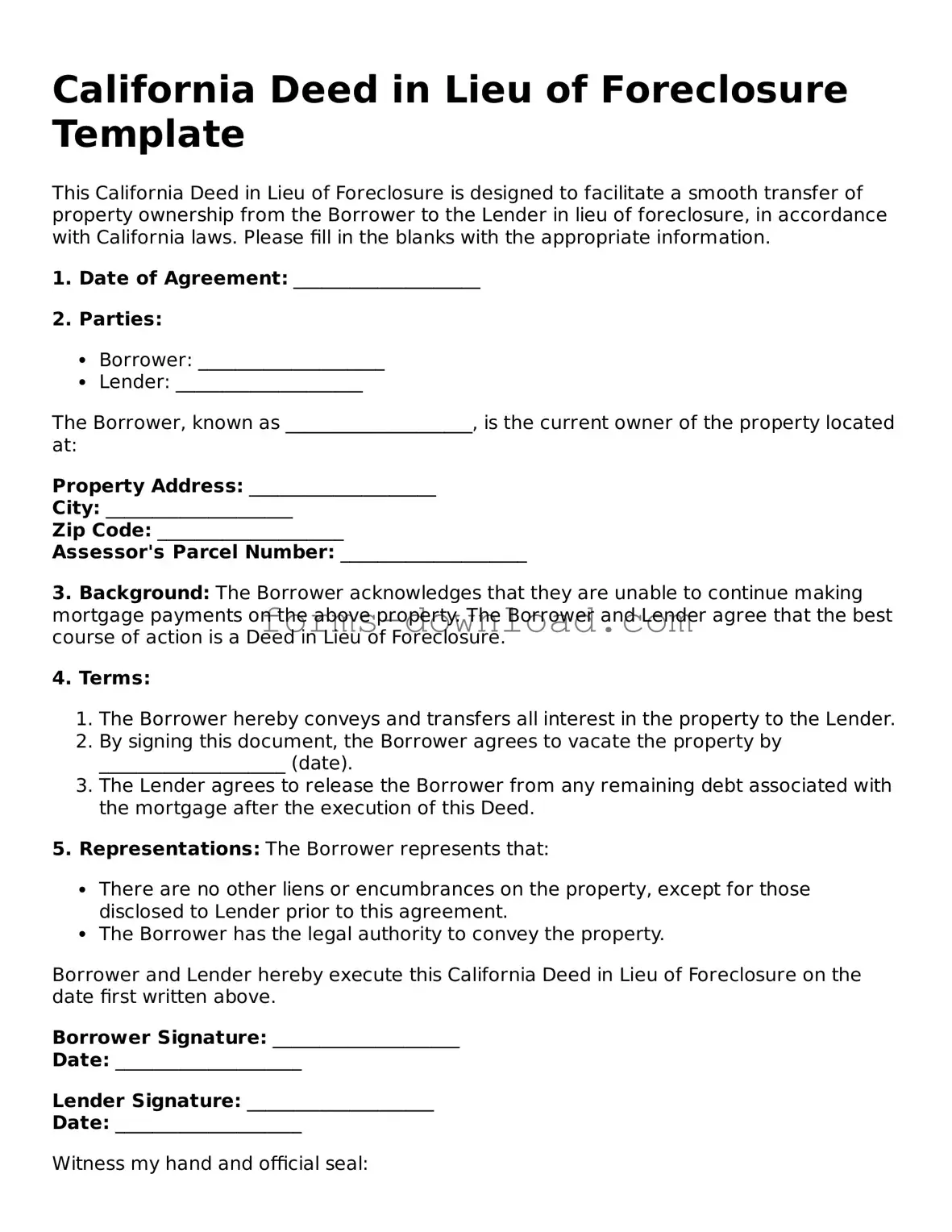California Deed in Lieu of Foreclosure Template
This California Deed in Lieu of Foreclosure is designed to facilitate a smooth transfer of property ownership from the Borrower to the Lender in lieu of foreclosure, in accordance with California laws. Please fill in the blanks with the appropriate information.
1. Date of Agreement: ____________________
2. Parties:
- Borrower: ____________________
- Lender: ____________________
The Borrower, known as ____________________, is the current owner of the property located at:
Property Address: ____________________
City: ____________________
Zip Code: ____________________
Assessor's Parcel Number: ____________________
3. Background: The Borrower acknowledges that they are unable to continue making mortgage payments on the above property. The Borrower and Lender agree that the best course of action is a Deed in Lieu of Foreclosure.
4. Terms:
- The Borrower hereby conveys and transfers all interest in the property to the Lender.
- By signing this document, the Borrower agrees to vacate the property by ____________________ (date).
- The Lender agrees to release the Borrower from any remaining debt associated with the mortgage after the execution of this Deed.
5. Representations: The Borrower represents that:
- There are no other liens or encumbrances on the property, except for those disclosed to Lender prior to this agreement.
- The Borrower has the legal authority to convey the property.
Borrower and Lender hereby execute this California Deed in Lieu of Foreclosure on the date first written above.
Borrower Signature: ____________________
Date: ____________________
Lender Signature: ____________________
Date: ____________________
Witness my hand and official seal:
Notary Public Signature: ____________________
Date: ____________________
This document has been prepared for informational purposes only and does not constitute legal advice. Consult an attorney for specific legal guidance.
